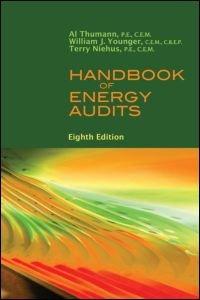Question
Ramona Castro spent much of her childhood learning the art of cookie making from her grandmother. They passed many happy hours mastering every type of
Ramona Castro spent much of her childhood learning the art of cookie making from her grandmother. They passed many happy hours mastering every type of cookie imaginable and later creating new recipes that were both healthy and delicious. Now at the start of her second year in college, Ramona is investigating various possibilities for starting her own business as part of the requirements of the entrepreneurship program in which she is enrolled. A long-time friend insists that Ramona has to somehow include cookies in her business plan. After a series of brainstorming sessions, Ramona settles on the idea of operating a cookie-making school. She will start on a part-time basis and offer her services in peoples homes. Now that she has started thinking about it, the possibilities seem endless. During the fall, she will concentrate on holiday cookies. She will offer individual lessons and group sessions (which will probably be more entertainment than education for the participants). Ramona also decides to include children in her target market. The first difficult decision is coming up with the perfect name for her business. In the end, she settles on Cookie Creations and then moves on to more important issues. After researching the different forms of business organization. Ramona Castro decides to operate Castro Creations as a proprietorship. She then starts the process of getting the business running. In November 2019, the following activities take place. Nov. 5 Ramona cashes her Savings Bonds and receives $700, which she deposits in her personal bank account. 7 She opens a bank account under the name Castro Creations and transfers $450 from her personal account to the new account. 10 Ramona pays $65 for advertising. 13 She buys baking supplies, such as flour, sugar, butter, and chocolate chips, for $150 cash. (Hint: Use Supplies account.) 14 Ramona starts to gather some baking equipment to take with her when teaching the cookie classes. She has an excellent top-of-the-line food processor and mixer that originally cost her $750. Ramona decides to start using it only in her new business. She estimates that the equipment is currently worth $300. She invests the equipment in the business. 15 Ramona realizes that her initial cash investment is not enough. Her grandmother lends her $1,800 cash, for which Ramona signs a note payable in the name of the business. Natalie deposits the money in the business bank account. (Hint: The note does not have to be repaid for 24 months. As a result, the note payable should be reported in the accounts as the last liability and also on the balance sheet as the last liability.) 17 She buys more baking equipment for $850 cash. 20 She teaches her first class and collects $125 cash. 24 Ramona books a second class for December 4 for $150. She receives $30 cash in advance as a down payment.
30 Ramona pays $1,320 for a one-year insurance policy that will expire on December 1, 2019.
It is the end of October and Ramona has been in touch with her grandmother. Her grandmother asked Ramona how well things went in her first month of business. Ramona, too, would like to know if she has been profitable or not during November. Ramona realizes that in order to determine Castro Creations income, she must first make adjustments. Ramona puts together the following additional information. 1. A count reveals that $35 of baking supplies were used during November. 2. Ramona estimates that all of her baking equipment will have a useful life of 5 years or 60 months. (Assume Natalie decides to record a full months worth of depreciation, regardless of when the equipment was obtained by the business.) 3. Ramonas grandmother has decided to charge interest of 6% on the note payable extended on November 16. The loan plus interest is to be repaid in 24 months. (Assume that half a month of interest accrued during November.) 4. On November 30, a friend of Ramonas asks her to teach a class at the neighborhood school. Ramona agrees and teaches a group of 35 first-grade students how to make Santa Claus cookies. The next day, Ramona prepares an invoice for $300 and leaves it with the school principal. The principal says that he will pass the invoice along to the head office, and it will be paid sometime in December. 5. Ramona receives a utilities bill for $45. The bill is for utilities consumed by Ramonas business during November and is due December 15. Questions: 1. (a) What form of business organizationproprietorship, partnership, or corporation do you recommend that Ramona use for her business? Discuss the benefits and weaknesses of each form and give the reasons for your choice. (b) Will Ramona need accounting information? If yes, what information will she need and why? How often will she need this information?
2. (a) Identify specific asset, liability, and owners equity accounts that Castro Creations
will likely use to record its business transactions. (b) Should Ramona open a separate bank account for the business? Why or why not? 3. (a) Prepare journal entries to record the November transactions. (b) Post the journal entries to general ledger accounts and prepare a trial balance at November 30
4. (a) Using the additional information prepare and post the adjusting journal entries. (b) Prepare an adjusting trial balance and using the adjusted trial balance, calculate Castro Creations net income or net loss for the month of November. (Do not prepare an income statement.)
Step by Step Solution
There are 3 Steps involved in it
Step: 1

Get Instant Access to Expert-Tailored Solutions
See step-by-step solutions with expert insights and AI powered tools for academic success
Step: 2

Step: 3

Ace Your Homework with AI
Get the answers you need in no time with our AI-driven, step-by-step assistance
Get Started


